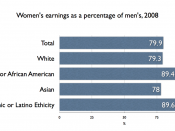Brazil is the largest Country in South America, it borders every other country of the continent except Chile and Ecuador and has a mixture of many different cultures.
In my cross-cultural study I will be comparing Australia to Brazil in relation to gender touching on characteristics such as the workforce, the educational system and family of these two cultures.
The Brazilian education system includes both public (federal, state and municipal) and private institutions ranging from pre-school to university and postgraduate levels. Education is compulsory for ages 7 through to 14 and public education is free at all levels. Significant advances have been made in the Brazilian educational structure in the last 30 years. In 1988 at least 25% of state and local tax revenues went to education. In 1964 there were ten million students attending schools at all levels, in 2000 this number had multiplied by 5. Although there had been a positive change within the education system in 2001, 12.5%
of the population was illiterate, a problem that is greatest among the poorer sections of the population. Women were allowed open access to schools and employment around the turn of the century and suffrage on a national level in 1933.
The status of women in Brazil has improved in various aspects despite gender and equality there are just as many females as males in schools, even at the highest levels, and professions that traditionally were dominated by males. The attitudes and actions of young people are generally not as sexist as those of there parents. The change within this education system has resulted in different values and attitudes between genders in the Brazilian society.
The Australian education system has experienced changes over time based on gender issues. Sydney university admitted its first women in 1882, the first women law...


